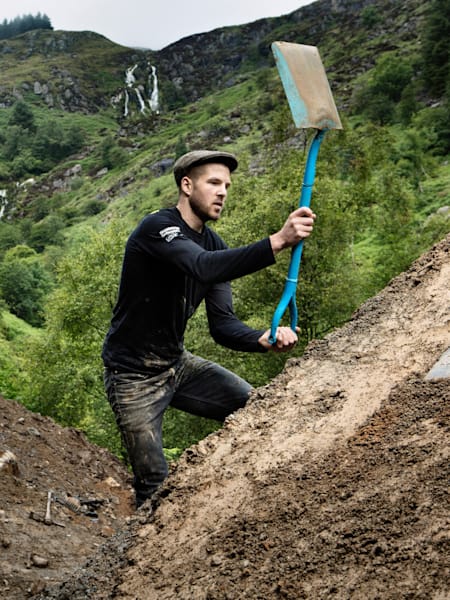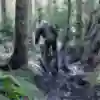Bike
In Part 1 of our Trail Building Basics series we looked at mountain bike trail building tools – which ones work best for each process, where to buy them and how much to spend – with the help and recommendations of TrailCraft’s Nikki Whiles.
Now we’ve had a few tips on getting the right tools for the job, let’s look at the basics of trail building. The first steps to crafting your own best trail ever.
Nikki joins us again to give his expert know-how. From crafting UK trail centres such as BikePark Wales to digging dream lines for the likes of Loïc Bruni in the film Gamble, Nikki sure knows his stuff when it comes to shaping mountain bike tracks. Here are a few things to consider before you get stuck in.
Know your hill
First things first, what line is your track going to take? No matter what the area you have to build on looks like – mountain, hill, steep, flat, forest or not – you are going to need to spend considerable time getting to know every available feature, planning lines, plotting your route and noting the good bits and the must-avoid bits.
"What’s especially important is walking the hill or area a lot. If you’ve got a hillside you want to build on, I recommend you walk it a lot until you know every inch of that hill – best features, gradients, etc. We GPS stuff and use every tool possible to help get an idea of the hill before we pick a route. Once you’ve picked your line you’re stuck with it. You want to avoid any kind of wet ground – stay high and dry if you can. Sometimes you are forced to take a bad route down a hill. But then the beauty of hand-built tracks is they are nearly always on a good route with good ground because it’s so hard to build by hand." – Nikki
Drainage
If you’ve built a mountain bike track before, you’ve probably learnt this lesson the hard way, whether you realise it or not. Good drainage is often overlooked, and the ensuing erosion and rapid destruction of a track perhaps isn’t always accredited to initial trail design. When you are picking a line for your track, always think about where the water will go and you will help guarantee greater longevity for your creation. Nikki explains that a common technique in trail centre building is the grade reversal – essentially making sure there are few flat spots for water to gather and deliberately building-in dips and hollows towards which the water will be sure to run and then exit the track.
"Drainage is absolutely paramount. Constantly think about it – where does water run? You want to avoid flat bits of trail – if it’s going up and down, water will always run off. Try to avoid drainage pipes – they tend to just clog up. Building features like rollers can help send water off the trail. Long sections with no features can cause really bad water erosion. In Madeira when we were building Bruni’s Gamble line, I met with the local government to talk about drainage as they didn’t want a mountain bike track to cause flooding – long runs with no planning can become channels for water."
Creating flow
When choosing the line of your trail and working on the initial build, you’ll probably be looking to create that highly sought-after riding experience: flow. Maintaining speed and ensuring everything links together is the key to flow, particularly where flatter trails are concerned – steeper tracks can afford to stop and start as the gradient will quickly get riders back up to speed.
"You don’t want to be braking loads and losing all your speed then having to build it up again. Well chosen and built features can make a trail feel flowy – nice snappy turns, rollers, roller doubles – two rollers close together that you can either roll, manual or jump, etc. I’d say nice features that link together without having any dull sections, where you keep your speed, that makes a good, flowy feeling."
Watch a perfect example of a good flow trial in the player below of the Flow Trail in Zermatt, Switzerland.

5 min
Zermatt Flow Trail POV
POV video of the MTB flow trail in Zermatt, Switzerland.
Bench cuts
If you’re working with a steep hillside and don’t want to go straight down, you’ll need to bench cut the trail. This means digging the trail into the hillside to create a bench profile in the hillside, and naturally this can equate to a lot of water gathering on the trail. Be extra vigilant in creating features designed to channel water off the trail, and make sure to include plenty of undulations that will force the water to go exactly where you plan.
"On a flat bench cut, you’re going to need a camber on it to make the water run-off. But what makes the best flow is a trail that really holds you in, and an opposite camber can feel horrible. Making the trail go up and down is the key, then you can also build features that help drainage."
Part three
In Part 3 we'll explain how to get that perfect flow in your trail by making the perfect turns and berms.
Many thanks to Nikki Whiles and TrailCraft for the help in preparing this article.










